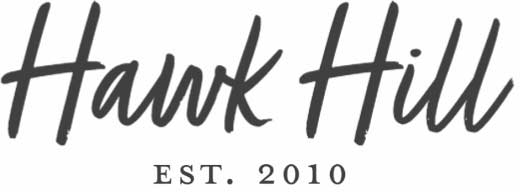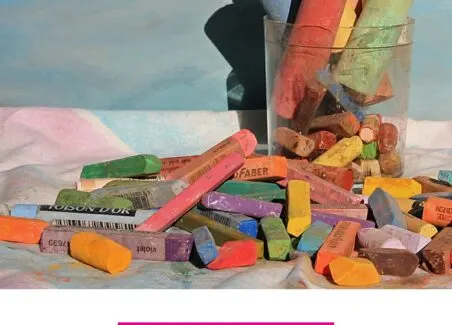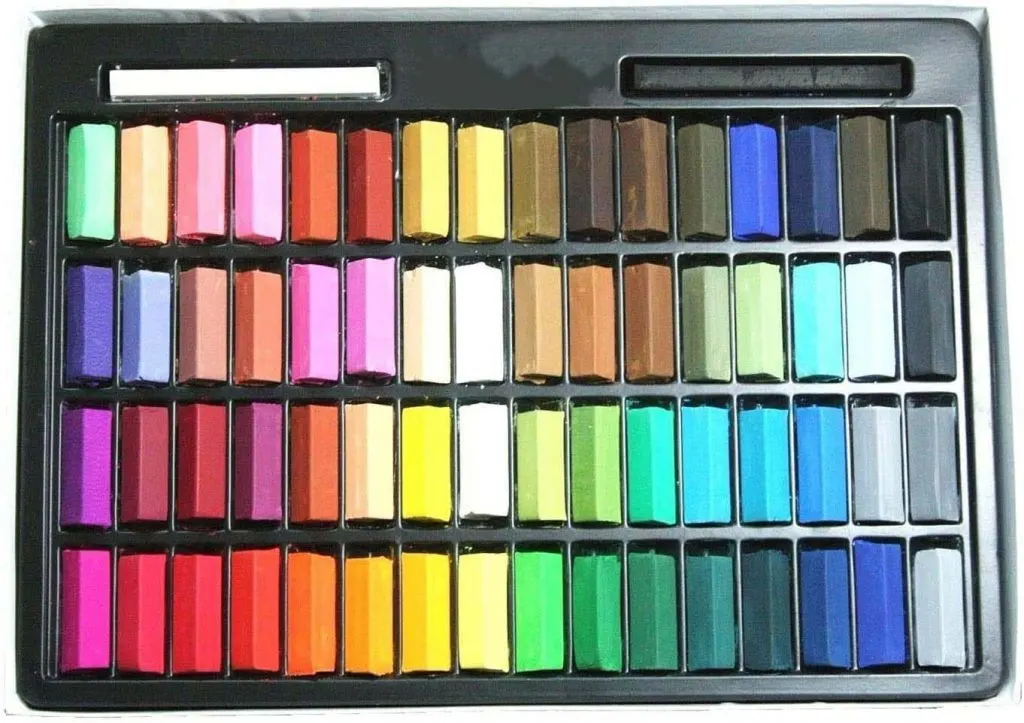By some measures, chalk might be the ultimate art supply. It’s affordable, erasable, non-toxic, and it’s easy to use. While many art supplies require technique, prep, training, or required supplies, chalk is easy and versatile –a fun and approachable art project for children and adults. Indoor chalkboard art walls are a fun way to have an interactive art surface/communication board in a home or office, and making chalk art on outside services with sidewalk chalk is a fun activity that can be done all year round (as long as it’s not a rainy day).

For a few years, one of my professional roles was to create on-campus opportunities for graduate students to play together and to make art together (and hopefully, playfully make art together). One of our most successful projects was a large chalkboard wall located next to our little free art supply library. Although the chalkboard wall project was inherited from previous leaders, it became my favorite project to steward. Tucked away in a less-trafficked corridor of the school, I loved how the chalkboard wall would spontaneously birth new, anonymous art- often seemingly overnight.
One day, as I was purchasing chalk to resupply the chalk tray that we kept near the chalkboard wall, I decided to see what would happen if we replaced standard chalk with inexpensive entry-level artist pastels. The result was astounding: the chalkboard wall which had previously only been able to display art made with a few basic pastel colors burst into color as artists (and brave non-artists) embraced the new full pallet of chalk which gave them vibrant colors, shading, highlighting, and a stunning new range of art on our shared chalkboard art wall.
The following section may contain affiliate links. As an Amazon Associate, we earn from qualifying purchases.
The Problem with using Chalk for Chalkboard Art:
Historically, both blackboard chalk and sidewalk chalk were made mostly from the mineral of the same name: chalk. Although some blackboard chalk is still made using this soft form of limestone comprised mostly of calcium carbonate (CaCO3), sidewalk chalk today has binders and pigments added to create resistance to breakage when used by small hands and uncoordinated movements. The problem is that this base ingredient, chalk, isn’t translucent (which would help carry pigment) and instead is a highly pigmented white (which actually blocks pigment).
Because the base material is actively muting color, and because pigments are- relatively- a very expensive material- in order to keep sidewalk chalk cheap, most manufacturers only produce faintly pastel sidewalk chalk. Currently no manufacturer makes sidewalk chalk in bright hues and deep shades needed for more artistic chalk art. Even Crayloa’s Neon “Super bright” sidewalk chalk is faintly pigmented.
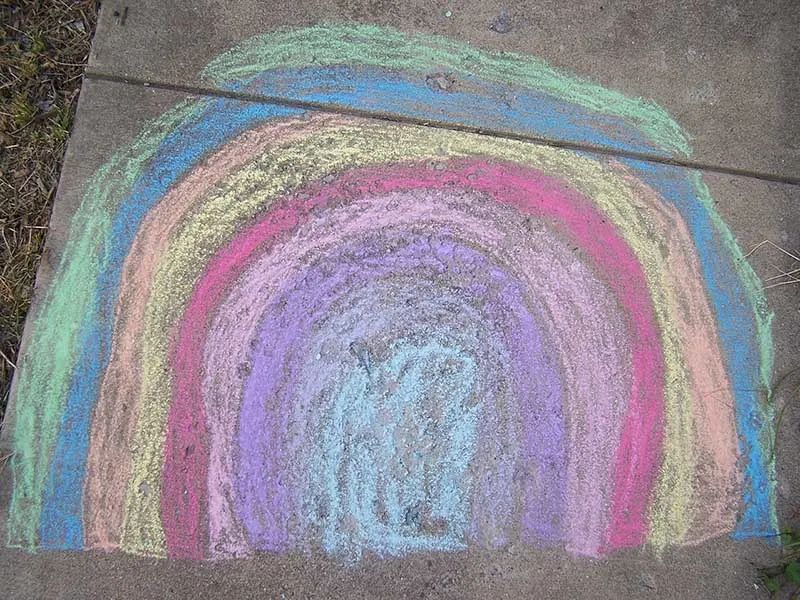
And most of the time this is ok! For many uses –like leaving messages or cute drawings on a chalkboard message wall in a family kitchen, letting kids get fresh air drawing outside– the pastel colors of standard writing chalk or sidewalk chalk are perfect! A few basic colors make it easy to draw colorful scenes and messages on surfaces. It’s cheap, easy to clean, and in applications where specific color tone and shade don’t matter, the pale pigments of standard chalk or sidewalk chalk are more than sufficient to communicate a message or illustrate a simple child’s drawing.
The Argument for Swapping Chalk with Pastels
Artist Pastels are an art supply made from a blend of powdered pigments, chalk, and a binder. Swapping regular sidewalk with artist pastels (sometimes called “soft pastels) is an easy way to instantly boost the “wow” factor of your chalk art. Instead of soft pinks, pale yellows, and pastel blues typical for chalk, artist pastels provide a nearly infinite palette of vibrant primary colors, realistic skin tones, shaded light colors for highlighting, and just about any other color you can imagine.
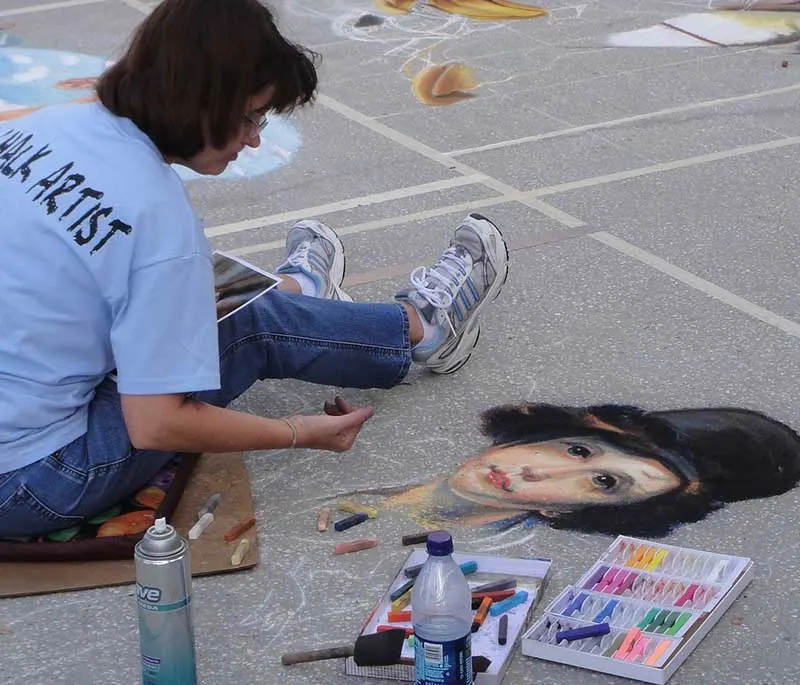
Although in the past chalk and pastels were very different products, modern artist pastels and modern chalk/sidewalk chalk are actually very similar products. Art pastels were once very expensive and brittle sticks of pigment mixed with a little bit of binder, while chalk was a rock-like form of calcium carbonate mineral. Over the years, and as different manufacturers have experimented with different formulas, the gap between the two products has narrowed. Chalk is now made with binder and pigment, and artist pastels are formulated to be affordable and much less brittle than they were in the past.
Today, these products are divided mostly by what their manufacturer’s value most: ease of use versus color quality. Sidewalk chalk is produced with the aim of being resistant to breakage and easy to clean up; while artist pastel manufacturers prioritize smooth blending and depth of color.
NOTES:
Should you buy nice pastels? It depends. Entry level soft pastels have more binder and a little less pigment, making them a bit paler but much cheaper and more resistant to breakage. Luxury/professional grade artist pastels tend to be richer in color and smoother to blend, but very very brittle because the pigment content is so high. For this reason, unless you’re doing professional chalk art, entry-level pastels are perfect for chalkboard walls and outdoor art. I recommend starting with entry-level pastels and then adding nicer pastels in singles and keeping your eye out for pastels of all types at garage sales and thrift stores.
Planning ahead: blackboard chalk is fairly hard, while sidewalk chalk is formulated to be a little softer in texture (and smoother to write with on rough surfaces like cement). Artist pastels tend to be even softer. This means you get less coverage from the same amount of material. Expect to go through pastels fairly quickly – especially when working on a large project. If you’re working on a project and don’t want to run out in the middle, a good rule of thumb is to buy two or even three times as much chalk pastels as you think you might need.
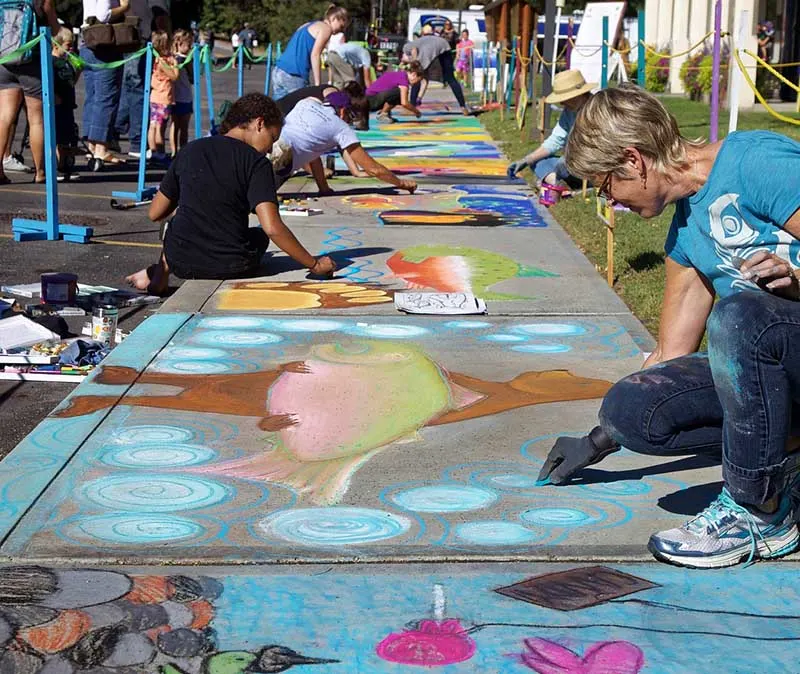
Note: chalk pastels and oil pastels are not the same product!
Be sure and read the packaging to be sure that you do not purchase oil-based pastels. Oil pastels have an oily crayon–like texture instead of a chalky texture. Oil pastels will not wipe clean up easily like chalk pastels. If you accidentally get oil pastels on your chalkboard wall you can use a Magic Eraser and Dawn dish soap to remove the oil-based markings.
